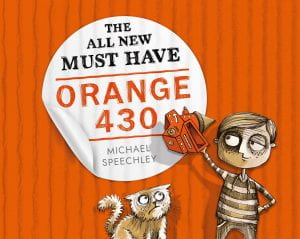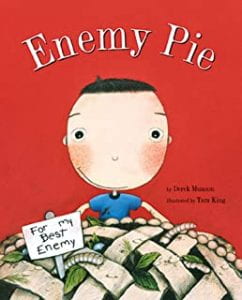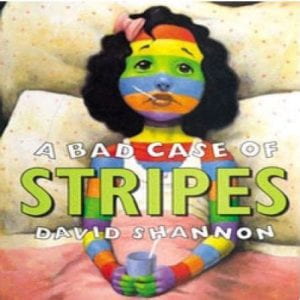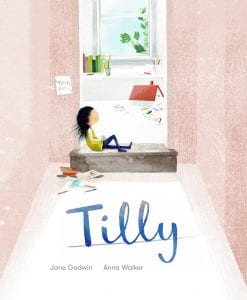Module 3.2
Are School librarians and endangered species?
Karen Bonanno (Australian School Library Association, 2011) argues that teacher librarians are more valuable than ever, yet they are somewhat invisible. She argues that TLs need to differentiate themselves in the school community. They must identify what it is that they can do or offer that others don’t. Make it visible, necessary. Follow a focus area through until successful. Establish relationships with students, staff and leadership. Show how the work of the TL enhances and develops the general capabilities. In her follow up article, A profession at the tipping point (revisited) (Bonanno 2015) Bonanno adds that TLs must keep abreast of developments in curriculum and pedagogy to ensure that the curriculum is effectively and efficiently resourced, and they can share their knowledge, advocacy and solutions with their colleagues.
Compare and contrast the works of Purcell, Herring and Lamb
Dr Purcell (2010) argues that many school staff do not have a clear understanding of the role of the TL and therefore role clarification is necessary. She recommends a time study to provide hard evidence of what the TL is actually doing during the day, and where changes might be made in order to spend more time actively engaging with students and therefore, hopefully having an effect on student learning outcomes. This data, Purcell argues can me used when advocating for the school library program and keeping the Principal and leadership of the school informed about the necessity and impact of the program. Purcell breaks the TL role down into 5 distinct yet interconnected areas: leader, program administrator, instructional partner, information specialist and teacher. She argues that these roles are interconnected – one can not be achieved without the other. Purcell recommends TLs engage in ongoing professional development to ensure their skill set remains up-to-date.
Herring (2007) draws together industry documents from around the world to compare and contrast the mission statements and role statements regarding school libraries and teacher librarians. He states that the learning that happens in the school library should be an extension of that learning that happens in the classroom. He argues that the use of ICTs allows teachers to encourage more active and collaborative learning. Herring suggests that the mission of the school library should be primarily in the development of teaching and learning in the school and secondarily about the provision of resources for that teaching and learning. He describes reading for pleasure as a “small part of the school curriculum” (p29) that is given unnecessary prominence in library mission statements. Herring describes 5 elements of school library mission statements:
- Develop effective teaching and learning across the school
- Resourcing the curriculum
- Provide a suitable learning environment
- Promote reading for pleasure and life-long learning
- Develop information literate students.
Herring describes the many and varied roles of the TL in schools and suggests that it is not possible to fulfil all of them concurrently, therefore TLs must prioritise according to the needs of the school community. He suggests that the teacher part of the TL’s job is to promote information literacy, promote resource based education and promote reading for understanding and for pleasure. The Librarian part of the job is to organise information for easy access, interpret information systems in the context of curriculum, ensure students are able to use learning resources both within and outside the school and promote independent use of the library for learning. He argues that as library managers, teacher librarians should evaluate the needs of the students and staff, evaluate and develop the collection and related policies, manage the information services and provide a ‘stimulating and helpful environment (ASLA 2003, p62 in Herring 2007, p31).
Herring (2007) discusses the various information literacy models available in the literature. He considers Kuhlthau’s (2004) Information Search Process, Capra and Ryan’s (2001) Information Literacy Planning Overview, Eisenberg and Berkowitz’s (1990) Big 6, Herring’s (2004) PLUS. He suggests that, while there is evidence that teaching information literacy skills using these models does lead to improved student performance (Ryan & Hudson, 2003; Wolf 2003; Herring, 2006), new strategies that include mobile and connected devices will need to be developed.
Herring (2007) discusses the features of a high quality collection development policy. He cites Dillon et al. (2001) who recommend the policy cover:
- Acquisition policy (not procedure)
- Criteria for resource selection
- Evaluation policy and
- Disputed material policy
Herring (2007) describes the provision of information to students and staff as including reference interviews, selective dissemination of information, development of pathfinders, use of interesting and informative displays. He briefly mentions the importance of collaboration between class teachers and the teacher librarian in developing and effective library website and stresses the importance of on-going professional development, encouraging teacher librarians to remain abreast of changes in technology and pedagogy and act as leaders in their schools in helping teachers to implement change.
Lamb (2011) uses the mnemonic PALETTE to describe the varied roles of the teacher librarian: People, Administration, Learning Electronic information, Technology, Teaching and Environments. She stresses the importance of forming productive, collaborative relationships with a range of people including teachers, administrators, students and the wider community. These relationships may increasingly be fostered in online environments. Lamb agrees with Herring (2007) that one of the keys to productive, collaborative relationships is in selective dissemination of information. Filtering and targeting information for the particular needs of individuals and communicating that information in a way that is accessible and appealing to that individual. She recommends developing students to be critical thinkers and producers of information rather than merely consumers. While she sees developments in technology as a vital and game-changing advent in the information and education landscapes, she stresses the importance of using that technology as a tool to address other, subject specific knowledge, rather than ICT skills themselves being the goal.
Lamb (2007), Purcell (2010), Valenza (2010) and Herring (2007) all agree on the importance of teacher librarians engaging in ongoing professional development to ensure they remain on the front foot in relation to developments in the information and education landscapes, emerging technologies and pedagogies and innovation. They also agree on the importance of advocacy for the library program with administrators and school leaders who are contending with shrinking budgets and pressure to produce increased student performance.
Herring (2007), Purcell (2010) and Valenza (2010) comment on the many and varied roles of the teacher librarian. Purcell suggests that the roles are interconnected and often misunderstood and so role definition is required. Herring suggests that, as the roles are so varied and numerous, it is not possible to fulfil them all given the resources most school librarian have at their disposal. Prioritisation is therefore required, and that that prioritisation should take account of the needs and goals of the school community. Lamb agrees that the roles are varied and suggests that collaboration with class teachers and the school community is the most important aspect.
Lamb (2007), Purcell (2010), Valenza (2010) and Herring (2007) all comment on the changing information landscape with the advent and continual evolution of digital technologies in schools. They recommend that teacher librarians should be a driving and educating force for both students and teachers in how these new technologies can be used to enhance the educational outcomes of students. Lamb describes a required shift in strategy due to changes in ICT and how these changes affect every part of the teacher librarian’s role. Valenza describes a number of tools that might be utilized to meet the changing and growing demand for digital literacy. While a number of the tools she suggests are somewhat common place now, nine years later, her point is that the teacher librarian, more than any other member of the school community is responsible for seeking out, using and teaching technological developments as they occur.
References
Australian School Library Association (ASLA) (2011). A profession at the tipping point: Time to change the game plan. Keynote presentation, Karen Bonanno. Retrieved from https://vimeo.com/31003940
Bonanno , K. (2015). A profession at the tipping point (revisited). Access, March, 14-21
Herring, J. (2007). “Teacher librarians and the school library.” Libraries in the twenty-first century: charting new directions in information: 27-42.
Lamb, A. (2011). “Bursting with potential: Mixing a media specialist’s palette.” TechTrends 55(4): 27-36.
Purcell, M. (2010). “All Librarians Do Is Check out Books, Right? A Look at the Roles of a School Library Media Specialist.” Library Media Connection 29(3): 30-33.
Valenza , J. (2010). A revised manifesto. Retrieved from http :// blogs . slj .com/ neverendingsearch /2010/12/03/a-revised-manifesto/





